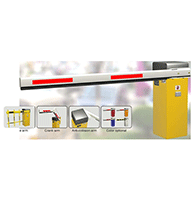Asset management has come a long way, evolving far beyond merely keeping track of physical items. In the rapidly changing landscape of IT and beyond, staying on top of the latest trends and innovations in asset management is crucial. This article explores what’s new in asset management, covering advancements in IT asset management, the integration of IoT, and how these changes are reshaping industries far and wide.
The Shifting Landscape of IT Asset Management
In the realm of IT, asset management has undergone a significant transformation. Gone are the days when asset management simply meant cataloging computers and peripherals. Today, it encompasses a broader spectrum of devices and data.
1. The Rise of Remote Work
One of the most substantial shifts in recent times has been the widespread adoption of remote work. The COVID-19 pandemic accelerated this trend, prompting organizations to rethink how they manage assets when they’re spread across various locations.
IT asset management tools have adapted to this new normal by offering cloud-based solutions that allow for the remote tracking and management of devices. This has enabled organizations to maintain visibility and control over their assets, even when employees are working from home or other remote locations.
2. Focus on Data Security
With the increasing reliance on digital assets and data, the security of these assets has become a paramount concern. IT asset management has evolved to include robust security features, such as encryption, access controls, and threat detection.
These security measures not only protect sensitive data but also help organizations comply with stringent data protection regulations like GDPR and HIPAA. This heightened focus on security ensures that assets are not only tracked but also safeguarded against potential threats.
3. Automation and AI
Artificial intelligence (AI) and automation have become game-changers in IT asset management. These technologies can automatically discover and catalog assets, making the process more efficient and accurate. They can also predict maintenance needs, reducing downtime and optimizing asset performance.
The Role of IoT in Asset Management
Beyond IT, the Internet of Things (IoT) is revolutionizing asset management across various industries. IoT involves embedding sensors and connectivity into physical assets, enabling real-time monitoring and data collection. Here’s how IoT is transforming asset management:
1. Predictive Maintenance
In industries like manufacturing and healthcare, IoT sensors are used to monitor the condition of equipment and machinery. By analyzing data from these sensors, organizations can predict when maintenance is needed before a breakdown occurs. This proactive approach not only reduces downtime but also extends the lifespan of assets.
2. Improved Resource Management
IoT-enabled asset management extends to areas like fleet management, where vehicles are equipped with GPS and sensors. This allows organizations to optimize routes, monitor fuel consumption, and track vehicle health. As a result, businesses can reduce operating costs and minimize environmental impact.
3. Enhanced Customer Experience
In the retail sector, IoT-enabled asset management is enhancing the customer experience. Smart shelves, for example, use sensors to detect when products are running low and automatically trigger restocking orders. This ensures that customers find what they need on the shelves, improving satisfaction and sales.
4. Supply Chain Visibility
IoT sensors are also being employed to track assets within the supply chain. This level of visibility provides real-time insights into the location and condition of products, allowing organizations to respond quickly to disruptions and reduce inventory carrying costs.
Read More – Marine asset management
Integration and Interoperability
One of the key developments in asset management is the increasing emphasis on integration and interoperability. Organizations are realizing that asset management systems should not operate in isolation but should seamlessly connect with other business systems.
- 1. Integration with Enterprise Resource Planning (ERP) Systems: Integrating asset management with ERP systems allows for a more holistic view of assets and their impact on business operations. This integration streamlines processes such as procurement, maintenance, and financial reporting, leading to better decision-making.
- 2. Interconnected Ecosystems: In industries like smart cities and utilities, asset management systems are part of interconnected ecosystems. For example, in a smart city, assets like streetlights and waste bins are equipped with sensors that communicate with a centralized asset management system. This connectivity enables efficient maintenance and resource allocation.
- 3. Interoperable Standards: Interoperability is further enhanced by the development of standardized data formats and protocols. These standards ensure that asset management systems can communicate with various devices and platforms, reducing complexity and promoting compatibility.
The Role of Analytics and Reporting
Modern asset management solutions are harnessing the power of data analytics and reporting to provide actionable insights. These tools go beyond basic asset tracking and offer:
1. Performance Analytics: Organizations can analyze asset performance data to identify inefficiencies, optimize asset usage, and reduce operational costs. For example, in a manufacturing plant, performance analytics can reveal which machines are operating below capacity and need maintenance.
2. Predictive Analytics: Predictive analytics use historical data and machine learning algorithms to forecast asset failures and maintenance needs. This proactive approach minimizes downtime and extends asset lifespans.
3. Financial Reporting Asset management systems now include robust financial reporting capabilities. This allows organizations to track asset depreciation, calculate total cost of ownership, and make informed decisions about asset investments and replacements.
Challenges Ahead
While asset management has made significant strides, it’s not without its challenges. Organizations must grapple with the vast amounts of data generated by IoT devices, the potential for security breaches, and the need for skilled personnel to manage these complex systems.
However, with the right strategies and technologies in place, these challenges can be overcome. The future of asset management promises even greater integration, automation, and data-driven insights, ultimately paving the way for more efficient and sustainable operations.
Conclusion: The Ever-Evolving World of Asset Management
Asset management has transcended its traditional boundaries, adapting to the evolving needs of organizations in the digital age. Whether in IT or across industries through IoT integration, IT hardware asset management has become a strategic enabler of efficiency, cost control, and data-driven decision-making.
As businesses continue to embrace new technologies and interconnected ecosystems, asset management will remain a vital tool for optimizing operations and driving sustainable growth. Staying informed about the latest developments in asset management is essential for organizations looking to thrive in an ever-evolving world.




